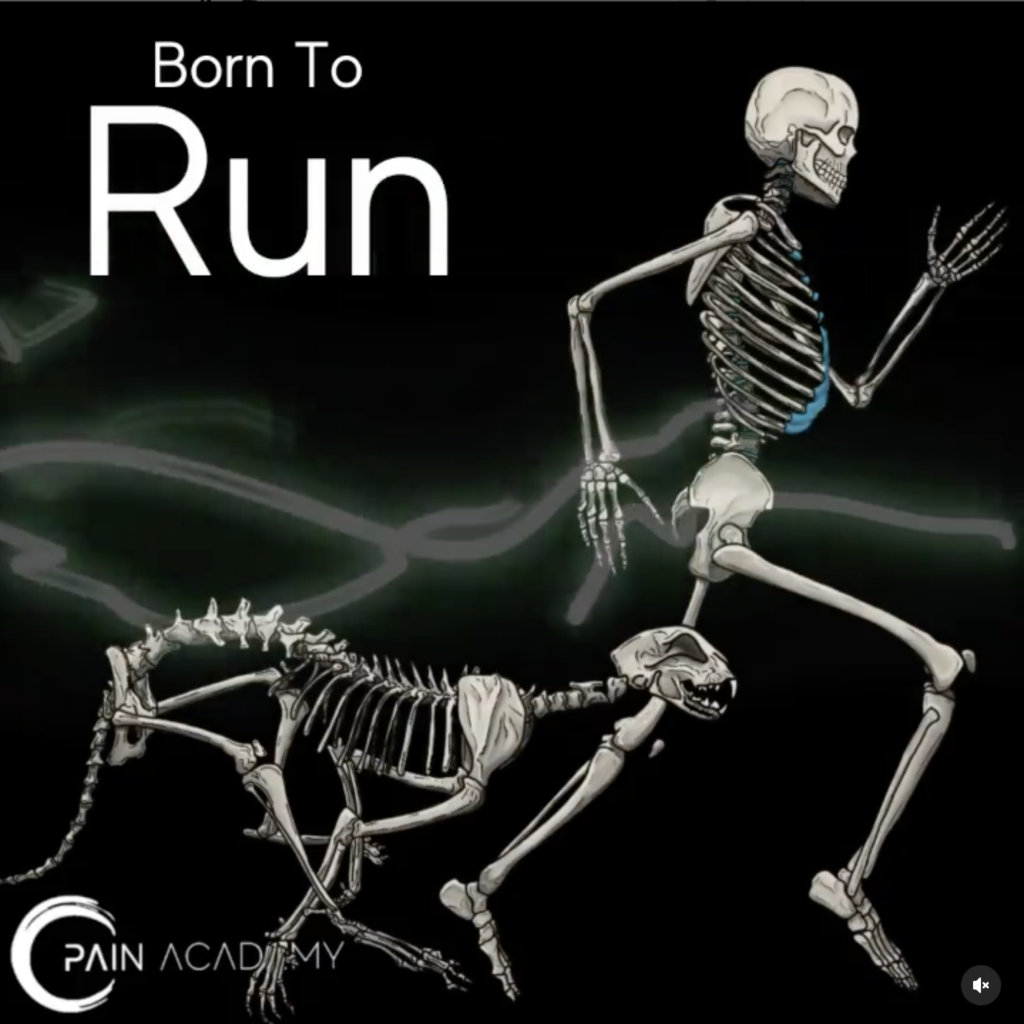
Even if you dislike running or regardless of what you have been told about it, your body is loaded with features from head to toe that give you the ability to run exceptionally well over long distances.
Features like…
- Lengthy legs for an animal our size and weight. If a horse, a dog, and a human were running side by side at an endurance speed of 6 meters per second (trot speed for animals), we would cover more distance per stride than a horse or a dog. Meaning, we can run further with each step and spend less energy over long distance [1].
- Our heart can stretch out to pump 7x more volume of blood when running. At rest, our heart on average pumps 4-6 liters per minute. When running, it has the capacity to pump upwards of 35 liters a minute. This is remarkably different from smaller, stiffer, thicker hearts of non-running animals [2,3].
- Our skin is loaded with 5-10 million sweat glands and we have minimal hair on our body. This helps to keep air close to the surface of our skin allowing us to dump large quantities of heat quickly. We have the ability to sweat one liter per hour giving us the cooling power to run a marathon in 90 degrees – something no other animal can do. Animals have some sweat glands, but they primary only dump heat through panting, not sweating [4].
- A specialized tendon called the Nuchal ligament found only in running animals that helps to stabilize the head while running so as to keep our gaze steady on the horizon [5].
- The leg muscles of an average human have a make up of 50-70% fatigue resistant slow-twitch muscle fibers compared our closest non-running relative, a chimpanzee, that ranges from 11 to 32% [6].
These are just a few examples of the many features we have that give us the ability to be some of the best distance runners in the animal kingdom.
Running gets a bad wrap not becuase it’s actually bad for the human body, but becuase of how most people run. Thick foamy shoes that desensitize neuromuscular function, poor movement patterns, lack of running technique and form – all of these add up for the conclusion that running is quiet injurious. Changing the style of shoe (minimal/barefoot shoe), improving the mechanics of how all of your joints move and how the muscles work together, correcting proper running form, can help us tap into the incredibly rare and unique features all of us are equipped with.